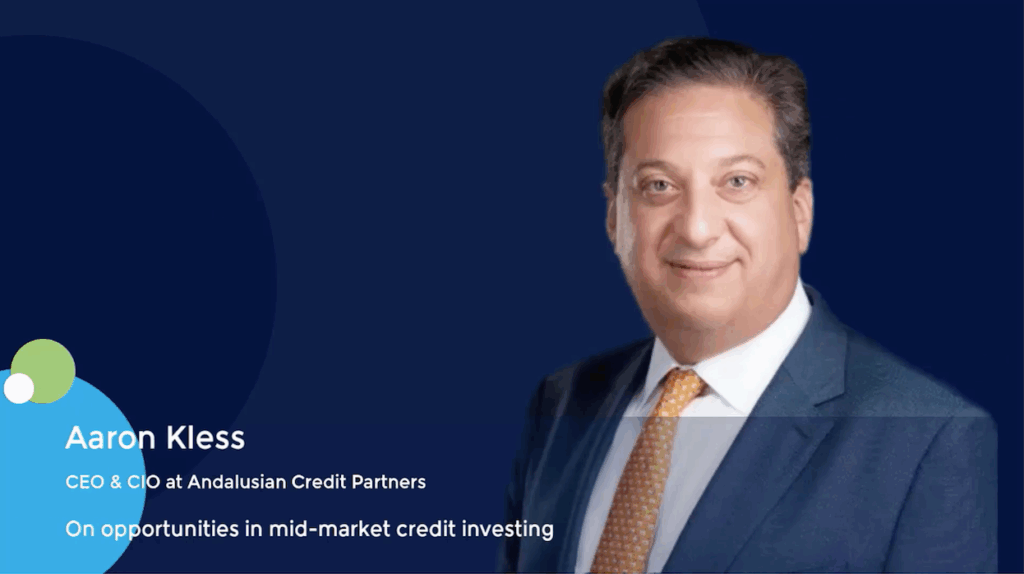India private credit: Local managers enjoy fundraising spree
Private credit strategies in India have been reinvigorated by willing local investors, structural reforms, and a shift in emphasis from distress to growth-oriented capital. Will supply overwhelm demand?
When True North launched a debut private credit fund in early 2022, it envisaged raising capital from domestic and international investors. Two years on, the private equity firm has exceeded the INR 10bn (USD 120m) target ahead of a scheduled final close at the end of the month, but all the LPs are local.
“We can accept offshore money, so it will continue to be a composite fund,” said Kapil Singhal, who joined True North in 2021 as a managing partner to lead the private credit business, having previously held similar roles in India at the likes of KKR and Edelweiss Group. “However, international fundraising was a bit of a challenge when we launched, so we pivoted quickly to domestic fundraising.”
True North’s LP base includes a few institutional investors and a sizeable array of family offices and high net worth individuals (HNWIs). There is no shortage of demand for private credit exposure among the latter two constituencies, prompting a surge in new supply – not so much from private equity firms as from public market asset managers, wealth managers, and asset reconstruction companies (ARCs).
“The risk-reward is stacking up compared to where it was before. Previously, you wouldn’t take on that risk for an additional 1% return [over fixed income mutual funds], but now it’s 3%-4% or more,” said Rohan Paranjpey, head of alternative investments at Waterfield Advisors, a multi-family office that is raising a INR 3bn private credit fund-of-funds.
“What concerns us most is that these managers tend to be first-time shops that haven’t done a private credit fund before. They may have a track record of lending as a NBFC [non-banking financial company] or as part of a larger corporate, but managing a fund is different.”
The rise of onshore private credit funds is driven by the confluence of several events. Growing interest from family offices and HNWIs tracks a period of aggressive wealth creation via the public markets post-COVID-19 and a subsequent desire for asset diversification. Private credit is a popular choice within alternatives, according to Bharat Gupta, a debt and special situations partner at EY India.
Changes in the tax treatment of fixed income mutual funds may also be playing a role. Previously, investments held for at least three years incurred a long-term capital gains tax of 20% adjusted for inflation. Since April, they have been taxed as income, with those in the top tax band paying 30%.
Paranjpey of Waterfield estimates that a net return of 6% on a fixed income mutual fund has been reduced to 4% because of the reform. Gains on private credit investments are already deemed to be income rather than capital gain, but a mid-teens pre-tax return now looks relatively more attractive.
From NBFC to AIF
At the same time, private credit is benefiting from a structural shift in how it is delivered. Seven years ago, the space was dominated by NBFCs, which borrowed money from banks and packaged it into structured products issued to corporates. These entities were intended to fill India’s lending gap, leveraging their networks and expertise to serve customers that banks wouldn’t touch.
However, there was always an asset-liability mismatch – NBFCs were borrowing short and lending long – and when loan books became stressed, banks pulled funding. Infrastructure Leasing & Financial Services Limited (IL&FS), which had to be rescued by the government, was the highest-profile casualty.
“NBFCs have since become more disciplined with smaller ticket sizes and a focus on retail lending. Wholesale bespoke structured lending solutions have been left to AIFs [alternate investment funds]. The current crop of players has learned through its evolution,” said True North’s Singhal.
“When operating as a bank or NBFC, you need to look your best to make sure your lending lines and your rating are protected. The incentives for AIF managers are different. It is more about how to be the best.”
Crucially, AIFs remove the asset-liability mismatch. Capital is raised from LPs rather than banks and it can be tied up for as long as a fund remains active. The compliance burden is also lighter than for NBFCs and there is greater flexibility regarding investments. Venture debt providers were among the first to make the switch to AIFs and others followed suit.
The Waterfield fund-of-funds will be deliberately broad, backing managers pursuing performing credit, venture debt, and special situations strategies. However, most funds entering the space are focused on performing credit. This reflects how the perceived opportunity set has moved away from distress – a consequence of India’s economic growth prospects and efforts to clean up non-performing loans (NPLs).
“In 2016-2018, after the introduction of IBC [India’s Insolvency & Bankruptcy Code], there was a lot of activity around distress, a lot of money was invested in repairing balance sheets,” said Ankur Jain, a managing director at InCred Alternative, part of the asset management business of InCred Group. “Now the economy is growing, businesses are stronger, and there is more demand for growth capital.”
InCred Alternative closed its first onshore private credit fund on USD 85m last year and is currently targeting USD 200m for the second. The strategy has always been mid-market performing credit. Kotak Investment Advisors, an alternate assets business within Kotak Mahindra Bank, raised USD 1bn for its debut special situations fund in 2019 amid the distress boom. The remit for Fund II is different.
On announcing a first close of USD 1.25bn – against an overall target of USD 1.6bn – in March, Eshwar Karra, CEO of the firm’s special situations unit, noted that the fund is positioned “to finance the impending capex growth cycle that we expect to play out over the next couple of years.”
Underserved middle
This transition is captured in the latest of EY’s periodic surveys of the private credit market in India. Asked to identify the main driver of deal flow, nearly 40% of respondents opted for corporate stress. Bridge to IPO and capex financing were joint second on 19%. However, only 24% expect stress to remain preeminent over the next 12-24 months. About 30% of respondents picked capex financing.
“Over the last 18 months, private sector capex has started kicking in. Banks are seeing a pick-up in corporate credit, but they are still only looking to lend to AA and A-rated companies,” said Gupta of EY. “There are also restrictions on M&A funding, they don’t want to lend against shares or provide funding that enables private equity exits, and they aren’t helping to solve working capital problems.”
In short, there is still a lending gap in India and AIFs are well-positioned to fill it. Oftentimes, companies work with an AIF to demonstrate their ability to repay and then qualify for bank funding. They may include businesses that were previously distressed and have been restored to health.
True North’s sweet spot is middle-market companies with turnover of INR 3bn-INR 15bn that require funding of at least INR 750m. There is an emphasis on relatively short tenor and generating returns through amortisation rather than back-ended bullet repayment.
Eight deals have closed to date; one of the companies is sponsor-owned, and the rest are founder-led. The fund is sector agnostic but there is a natural affinity for areas favoured by True North’s private equity strategy: healthcare, technology, financial services, and consumer.
“We are happy to work with True North’s past relationships, where they have previously invested in a company, had a great experience, and know the founders well,” said Singhal. “But we will never invest in a company in True North’s private equity portfolio and the PE strategy will not invest in companies while we are in there. We will not even take out a PE position and they will never take out a credit position.”
These red lines are intended to ensure there are no actual or perceived conflicts of interest between the two strategies. Others relate to True North’s risk appetite. Target companies must be profitable and have at least five years of operating history. And while diversification is important – there will be up to 20 deals in total – the fund cannot invest in real estate.
Singhal did not dismiss the prospect of adding real estate to the strategy later. However, Paranjpey of Waterfield suggested that a general reluctance to target the sector – not specific to True North – could be linked to problems involving real estate AIFs more than a decade ago.
“Too much capital came in, there was a lot of competition for similar deals, and it led to downward pressure on yields. The same will happen in private credit. That’s why picking the right manager is so important,” he said, adding that, in his view, there are only four quality managers in the country.
Still bullish
Three-quarters of respondents in the EY survey were positive on the prospects for private credit over the next 1-2 years. The longer the horizon, the stronger the sentiment, with nine of every 10 describing themselves as bullish or very bullish regarding a 2-5-year outlook. More than two-thirds said that competition in the space had increased in the past 12 months, yet this is not considered damaging.
“Right now, we don’t see increased competition causing a lowering of underwriting standards. Demand for capital still exceeds supply,” said Jain of InCred, referring to the sub-USD 50m deal space. “If the pace of private credit fundraising stays the same, maybe that will happen.”
For now, though, Gupta at EY is fielding calls from groups interested in joining the party, including two large global private equity firms. Most of India’s mega deals go to overseas investors pursuing high-yield strategies – Apollo Global Management, Oaktree Capital Management, and Varde Partners were active in the first half of 2023 – but few have ventured into performing credit.
Enquiries tend to be aimed at understanding the nature of the opportunity, the scale of the addressable market, and the identities of leading incumbents. Raising local capital is regarded as essential given foreign exchange costs eat into the return of US dollar-denominated pools.
“With the transition from distress to special situations, a lot of opportunities are being captured by domestic money that is happy with a 16%-18% return. Foreign players can’t do anything below 20%,” said Gupta. “Global funds must think through what they want to do because their cost of capital isn’t going down soon.”














